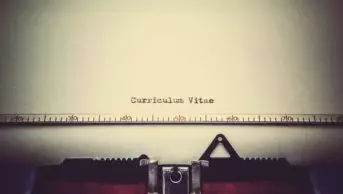
Shutterstock.com
Also read:
How to write a successful pharmacy CV
Do I really need to write a cover letter? In my role as a pharmacy recruiter and career coach, I am often asked whether a cover letter is a necessary accompaniment to a CV as part of a job application. Some people believe that cover letters just repeat information from their CVs — others are concerned that recruiters never even read them. However, if you can write a cover letter that explains why you are the right candidate for the job you want, you can ensure that your application stands out for the right reasons.
Cover letters — what’s the point?
Traditionally, you would send a CV and cover letter by post in response to a job application or as a speculative approach. Your cover letter would introduce you in a professional sense, explain why you were applying for the position and provide some evidence of your competency for the role.
Nowadays, applications are less frequently sent by post — they are usually emailed or completed online. Despite this, presenting a professional cover letter is still part of the established protocol. If you are responding to a job advertisement in today’s competitive pharmacy jobs market, it is likely you will be one of many applicants (sometimes one of hundreds). Therefore, you need to do everything you can to ensure your application stands out, which includes an excellent cover letter.
Consider the hiring manager’s point of view
Before you start writing your CV and cover letter, you need to ask yourself: “What would the hiring manager want to see in the application?”
One way to find out is to simply call and ask the hiring manager or recruiter exactly what they would like to see. A recent survey of US employers by Saddleback College in America has shown that they can have differing views on whether a cover letter is important, how long it should be and what information it should contain. By asking the employer directly, you can find out their specific views and tailor your cover letter accordingly.
Laying out your letter
There are no set rules for your cover letter, but a good structure is important. The cover letter is telling a story about you and, like all good stories, it should have a beginning, middle and end.
The beginning
If the application is being posted then use a standard letter format, with your own address and date on the right and the organisation’s contact name and address on the left. For email applications, put your cover letter in the main body of the email and add your CV as an attachment. Your cover letter can be ignored more easily if you attach it as a separate document.
You should always try to address your cover letter to a specific person when possible. This will be easier if you have already called the hiring manager. Research by Forum3 (now called Charity People), a not-for-profit recruitment company for the third sector, suggests you are 10–15% more likely to receive a reply if you address your application to a person and 5% more likely to get an interview[1]
. If you do not know the name of the person, then use a professional address such as “Dear Sir or Madam”.
Immediately after addressing the reader, you should state the purpose of the application, so that the reader can quickly understand the reason for the email. For example, “Reference: Application for Band 6 hospital pharmacist role”. This could also be included as the subject line of the email.
The first paragraph should describe what your current professional situation is and why you are applying for the position. This paragraph should also include any research you have done into the role or organisation, including anyone you have spoken to, any site visits you have undertaken and the name of anyone who may have referred you. If you have taken the time to research the organisation and the role, this could be a key differentiator for your application. However, you should avoid making generic statements, such as “I want to join your esteemed company”. Make sure anything you say about an organisation is relevant to them and based on the research you have undertaken.
The middle
Your cover letter should demonstrate to the reader that you have the key skills and experience relevant to the particular role. You can do this by providing specific examples, tailored to the requirements listed in the job description, of when you have demonstrated these from your own experience to date. Choose three or four of these relevant examples that each tell a story about your skills, experience or traits and provided a positive outcome for the stakeholders involved in the situation.
These examples could come from any part of your life, as long as they are relevant. Newly qualified pharmacists will likely use examples from their pharmacy placements, academia, part-time work and also extra-curricular activities, in order to demonstrate a range of skills. A more experienced pharmacist candidate would generally choose examples from their work history because it is the most relevant. However, sometimes it is appropriate to bring in other examples, such as voluntary work.
Always try to use an active voice when explaining your achievements, because this serves to make the reader feel that you were in control in these situations. Additionally, try to avoid making vague or generic statements that could apply to any applicant.
If an achievement is strong enough to be included in your cover letter, it should be repeated on your CV. Try not to repeat examples word-for-word on both documents — instead, try to interpret them differently. Sometimes, due to time constraints, the hiring manager may bypass your cover letter and go straight to your CV, which could mean they miss your best examples. In addition, repetition will serve to reinforce these key messages like a sales brochure would, which is, in essence, what your CV and cover letter are.
The end
In your final paragraph, thank the reader for taking the time to read your application and summarise why you feel you are a good fit for the role, based on your skills and experience. State how and when you can be contacted with regards to arranging an interview and then make sure you are available when you say you will be.
Sign off the letter professionally with “Yours sincerely” (to a specific person) or “Yours faithfully” (to an unnamed person), followed by your name.
Formatting your letter
In terms of format, a cover letter is usually written as a traditional letter, laid out in paragraphs. It is different to your CV, which is an abbreviated document that uses various techniques to draw the eye to the most important parts quickly and make the document as succinct as possible. In your cover letter, keep your language concise and purposeful. To achieve this, you may need to redraft your letter several times.
The grammar, spelling and formatting of your cover letter is just as important as the content of the document, so make sure it is perfect. Particularly, ensure you have spelt names and company names correctly and there are no typing errors. Research from student recruitment website StudentGems.com suggests half of employers discard job applications that contain spelling or formatting errors.
Choose a standard, well known and professional font, such as Arial, Verdana, Calibri, Times New Roman or Trebuchet. This will make the letter easier to read and will also support applicant tracking systems that may not be able to pick up lesser-known fonts. Keep your font size between 10 and 12 for ease of reading.
Through my own experience of recruiting pharmacists, I have observed that the standard of today’s pharmacy job applications is generally quite poor. If you spend time putting together a strong application, which includes an excellent cover letter, then it will stand out to an employer and increase your chances of securing the role.
References
[1] The company has since rebranded as www.charitypeople.co.uk and the research is no longer available online.



